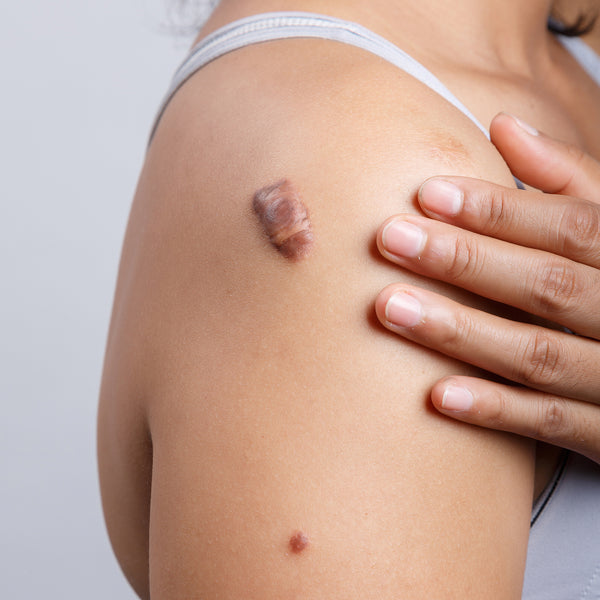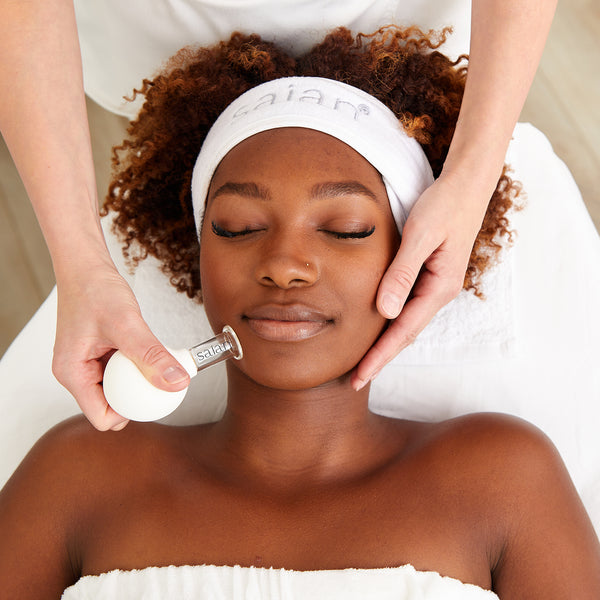Breaking Through the Scars: Exploring the Latest Innovations in Keloid Treatment

Keloids, the overgrowths of scar tissue that extend beyond the original wound, have long presented challenges for those affected. The recurrence of these scars has sparked ongoing research into advanced treatments. In this blog, we will delve into the world of keloids, understanding their origins, and exploring the most recent and effective treatments available.
Understanding Keloids:
Before we explore the newest treatment options, let's briefly understand keloids. These raised scars result from an abnormal wound healing response, where the body produces excess collagen during the healing process. This surplus collagen leads to the development of a raised, thickened scar that extends beyond the original injury site.
While keloids can form after any skin injury, they are more common in areas with minimal fatty tissue, such as the chest, back, shoulders, and earlobes. Contributing factors to keloid formation include genetics, age, and the nature of the wound.
Typically, the injuries that can contribute to keloids are:
- Ear Piercings or Body Piercings
- Acne
- Chicken Pox and Shingles
- Abrasions on the skin
- Burns
- Vaccination sites and Injection sites
- Surgical sites
- C-section scars
- Lasers and Cosmetic procedures
Traditional Treatment Approaches:
Historically, treating keloids has been a challenge, with traditional methods such as corticosteroid injections, surgery, laser therapy, and cryotherapy often falling short in providing long-term success. Recurrence remains a persistent issue.
The Latest Breakthroughs:
Recent advancements in medical research have paved the way for more effective and innovative treatments for recurring keloids. Here are some of the cutting-edge options:
1. Radiation Therapy:
- Low-dose radiation therapy has shown promise in preventing keloid recurrence post-surgery, inhibiting collagen production and controlling the overactive healing response.
2. Cryotherapy with Liquid Nitrogen:
- Freezing keloids with liquid nitrogen has proven effective in reducing size and preventing recurrence by eliminating abnormal cells.
3. Topical Silicone Gel:
- Recent innovations in silicone gel formulations have shown success in flattening and softening keloid scars.
4. Biological Therapies:
- Emerging biological therapies, including interleukin-10 (IL-10) injections, focus on modulating the immune response to curb excessive collagen formation.
5. Laser Therapy with Fractional Lasers:
- Fractional lasers target specific areas of keloids, promoting collagen remodeling and reducing scar elevation.
6. 5-Fluorouracil:
- The inclusion of 5-Fluorouracil, an antimetabolite medication, disrupts abnormal cell proliferation in keloid tissue, offering a novel avenue in managing these scars.
7. Botulinum Toxin Type A:
- Botulinum Toxin Type A, commonly used in cosmetic procedures, is showing promise in keloid treatment. By inhibiting muscle contractions and modulating cellular activities, it may contribute to preventing keloid recurrence.
8. Pressure Earrings:
- Pressure earrings, designed to exert constant pressure on the keloid, have demonstrated effectiveness in flattening and reducing the size of keloid scars. This non-invasive approach helps regulate collagen production and can be a valuable addition to keloid management.
Living with recurring keloids can be challenging, but the latest advancements in medical science offer hope for more effective and enduring solutions. From radiation therapy to innovative biological approaches and the inclusion of 5-Fluorouracil and Botulinum Toxin Type A, ongoing research is pushing the boundaries of keloid management. If you or someone you know is grappling with recurring keloids, consulting a healthcare professional is crucial to explore the most suitable and cutting-edge treatment options.










